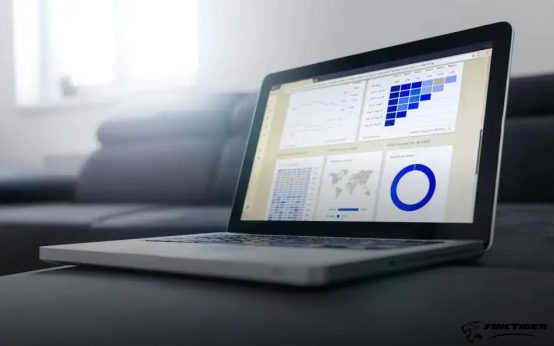Money traps can be subtle but dangerous, keeping you financially stuck. Recognizing and avoiding these common pitfalls is essential for financial freedom. From daily spending mistakes to costly habits, understanding these traps helps break the cycle of staying poor. Dive into effective strategies to identify harmful money habits and transform your financial future.
Recognizing Everyday Spending Mistakes
One common mistake people make is not recognizing their everyday spending habits. Small purchases, like coffee-to-go or a snack here and there, can add up significantly over time. It’s important to be mindful of these expenses. By tracking your daily expenditures, even the minor ones, you can identify patterns that might be draining your budget.
Impulse buying is another pitfall. Stores are designed to tempt with promotions and strategic product placements, encouraging unplanned spending. Creating a shopping list and sticking to it can help resist these impulses. Set a monthly budget for discretionary spending and track how much you’re spending to avoid overextending your finances.
Subscriptions can be another hidden expense. Gym memberships, streaming services, or subscription boxes often continue unnoticed. Evaluate your subscriptions regularly; cancel those you rarely use or don’t need.
Awareness
of automatic renewals can save money and prevent unnecessary financial strain.
Lastly, overlooking the power of used or second-hand goods is an error many make. Buying new can be expensive, and sometimes pre-owned items offer the same value at a fraction of the cost. Consider thrift shopping or online marketplaces for bargains that fit your budget. These simple adjustments in recognizing daily spending mistakes can lead to significant savings over time.
Breaking Free from Costly Habits

It’s all too easy to fall into the trap of costly habits that chip away at your finances over time. Many of these habits sneak into our daily lives without us even realizing it. Tackling them requires awareness and a commitment to change.
First, identify the habits that tend to drain your bank account. For some, it could be the lure of daily coffee shop runs or impulsive online shopping sprees. Evaluate your regular expenditures and pinpoint areas that might be saboteurs of your financial health.
Substitute high-cost habits with more economical alternatives. Instead of purchasing lunch every day, prepare meals at home. Opt for public transport over taxis or rideshares. These small adjustments can lead to significant savings over time.
Implement a tracking system to analyze your spending patterns. Use apps or budgeting tools that provide a visual representation of where your money goes. Understanding these patterns can offer insights into which habits need a rethink.
It’s also crucial to set realistic goals that inspire change. Decide on a specific amount you would like to save each month and take proactive steps to achieve it. Positive reinforcement of seeing the numbers improve can encourage a lasting shift in behavior.
Engage in mindful consumption by questioning each purchase’s necessity. Ask yourself if the item or service improves your life significantly or if it’s a temporary thrill. This reflection reduces impulsive buying.
Breaking free from costly habits isn’t an overnight process, but with perseverance and the right strategy, it’s entirely possible to reclaim control over your finances.
Understanding the Impact of Debt
Debt can profoundly shape your financial landscape, often in ways that are not immediately visible. It is essential to recognize how debt accrues and its long-term implications. For many, the allure of credit cards and loans often obscures the reality of high-interest rates and accumulated payments, which can lead to a cycle of debt that is difficult to escape.
High-Interest Rates and Minimum Payments: Interest rates on credit cards and personal loans can be exorbitant. Paying only the minimum amount each month can extend your repayment period drastically and increase the total cost due to interest. Understanding the difference between avoiding debt and managing existing debt is crucial for financial stability.
Student loans, mortgages, and car payments are also significant contributors to overall debt. While these might feel like necessary expenses, they require careful planning and realistic assessment of repayment capabilities. Failing to do so can lead to financial strain in the future.
Additionally, the impact of debt is not solely financial; it can also affect mental well-being, leading to stress and anxiety. Acknowledging this broader impact is vital for addressing debt effectively.
To manage debt wisely, consider the debt avalanche or debt snowball method, which involves prioritizing high-interest debts or quick wins by paying off smaller balances first. These strategies can significantly reduce financial burdens over time.
Being proactive about understanding the implications of debt can help prevent it from stifling your financial progress and keep you on the path to a more secure future.
Building a Sustainable Financial Plan

Creating a sustainable financial plan is vital for ensuring long-term financial health and avoiding the pitfalls that often lead to financial instability. To start, one needs to assess both short-term and long-term financial goals. This involves setting realistic objectives that align with one’s current financial situation and future aspirations.
The next step is developing a comprehensive budget that accounts for all income streams and necessary expenses. It’s crucial to incorporate elements of saving and investing within this budget. A solid plan not only focuses on daily expenses but also prepares for unexpected financial challenges by including an emergency fund.
Focus on Smart Investing
Investing is a cornerstone of a sustainable financial plan. Understanding the different investment options, from stocks and bonds to mutual funds and real estate, can help diversify your portfolio. Diversification is key in mitigating risks and ensuring steady growth over time. It’s advisable to seek expert financial advice to tailor investment strategies to your personal risk tolerance and financial goals.
Regularly Review and Adjust
A sustainable financial plan is not static; it’s a dynamic roadmap that requires regular review and adjustment. Changes in life circumstances, financial markets, or individual goals necessitate periodic reassessment and realignment of strategies. Consistently monitoring your plan allows for the timely identification of potential financial traps and the opportunity to pivot strategies effectively.





